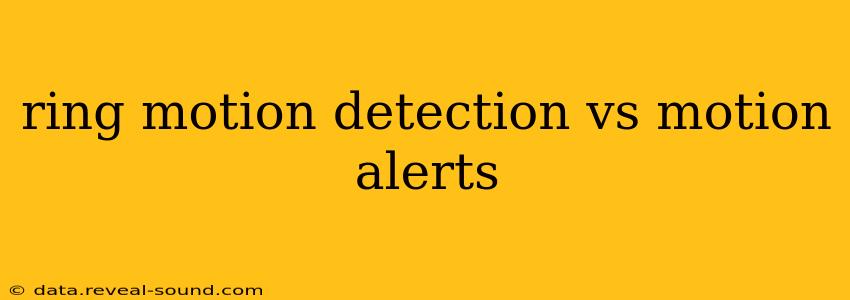Ring security cameras offer a powerful suite of features to protect your home, but the terms "motion detection" and "motion alerts" are often used interchangeably, leading to confusion. This article clarifies the distinction between these two important aspects of your Ring system and helps you optimize their settings for maximum effectiveness.
What is Ring Motion Detection?
Ring motion detection is the underlying technology that senses movement within your camera's field of view. The camera constantly analyzes the video feed, looking for changes in pixels that indicate movement. This process happens continuously, regardless of whether you've received any alerts. Think of it as the "engine" behind the system. The sensitivity of this detection can be adjusted in your Ring app, allowing you to fine-tune how sensitive the camera is to movement. A higher sensitivity means it will detect even slight movements, while a lower sensitivity will only trigger on more significant motion. Incorrectly setting this can lead to a flood of false alerts, so finding the optimal balance is key.
What are Ring Motion Alerts?
Ring motion alerts are the notifications you receive on your smartphone, tablet, or computer when motion is detected. These alerts are triggered only when the motion detection system identifies movement that meets your pre-defined settings. You can customize these settings extensively. For example, you can choose to receive alerts only during specific times of the day, ignore motion from certain zones (like busy streets), or only receive alerts when a person is detected, rather than a pet or swaying tree branches. Essentially, motion alerts are the outcome or output of the motion detection process.
How are Motion Detection and Motion Alerts Different?
The key difference lies in their function:
- Motion Detection: A constant, background process that analyzes the video feed for movement. It's always working.
- Motion Alerts: Notifications sent to your device when the motion detection system identifies movement that meets your specified criteria. These are triggered only when necessary.
Think of it like this: motion detection is the car engine, always running, and motion alerts are the car horn, which only sounds when you press the button (or in this case, when motion meets your specified criteria).
What are the Different Types of Motion Detection Zones in Ring?
Ring allows for customizable motion zones within your camera's view. This allows you to precisely control what areas trigger alerts. Instead of the entire field of view constantly alerting you, you can create smaller zones focusing on areas of interest such as your front door, driveway or back yard, significantly reducing false alarms.
How can I adjust the sensitivity of my Ring motion detection?
You can adjust the sensitivity of your Ring motion detection within the Ring app. Navigate to your camera's settings and look for options related to motion detection or sensitivity. Experiment with different settings to find the optimal balance between capturing important events and minimizing false alerts. Start with a lower sensitivity and gradually increase it until you achieve the desired level of detection without excessive false triggers.
Why am I getting so many false motion alerts?
Excessive false alerts are a common issue with Ring cameras. This usually stems from poorly configured motion detection settings. To reduce false alerts:
- Adjust motion detection sensitivity: Lower the sensitivity to reduce triggers from minor movements.
- Create custom motion zones: Focus alerts on specific areas instead of the entire camera view.
- Utilize person detection: If available, enable person detection to filter out alerts from pets or other non-human movement.
- Utilize features like "Smart Alerts": This feature utilizes AI to distinguish between humans and other objects to reduce false alarms.
By understanding the nuances of Ring motion detection and motion alerts, and carefully configuring their settings, you can optimize your Ring system for effective security and peace of mind. Remember, finding the perfect balance is a process of trial and error; adjust the settings, monitor your alerts, and refine them over time to achieve the best results for your specific needs and environment.
